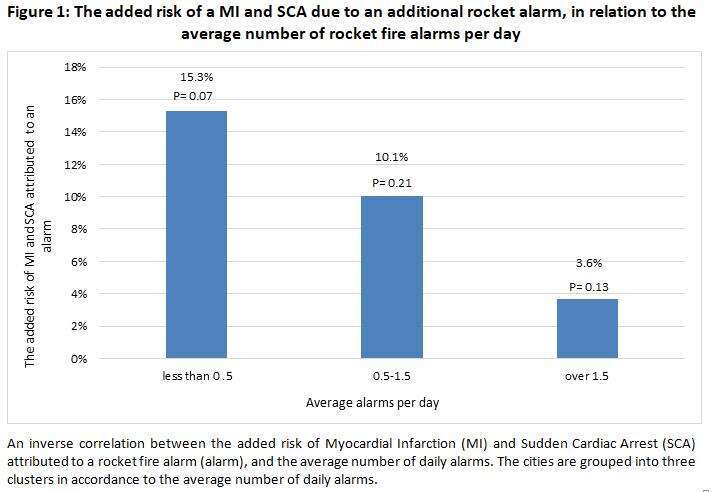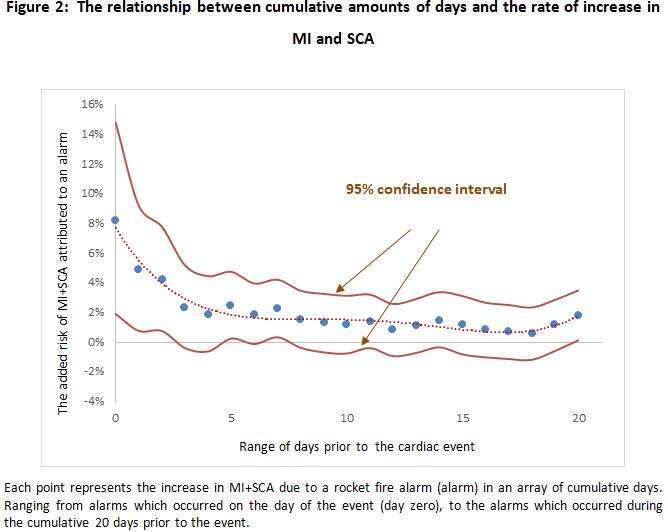
The Influence of Rocket Fire Alarms on Cardiac Events
Background:
The role of acute emotional stress in cardiac events is unclear. Prior research related life-threatening situations, mainly earthquakes and warfare, to the occurrence of cardiac events. However, these natural experiments were subject to confounding factors, being isolated incidents in uncontrolled environments. During the Israeli military operation "Tzuk Eitan" (50 days) rocket fire was launched at the Israeli population, initiating 1,304 rocket fire alarms. Our study examined the effect of these repetitive, random occurring alarms on cardiac events.
Methods:
This retrospective study investigated 3.9 million Israelis residing within 80kms from the Gaza Strip (the rocket attacks’ range). Outcomes were drawn from Israel`s Magen David Adom (MDA) call center and focused on Sudden Cardiac Arrest (SCA) and Myocardial Infarction (MI). To minimize confounding, MI definition was restricted to events in which physicians from outpatient clinics requested an ambulance based on clinical presentation, ECG changes and/or enzymes. The data was analyzed by Poisson regression. Statistical significance was set at P<0.05.
Results:
Within the study period MDA received 112 calls for SCA (90% pronounced dead at scene) and 97 for MI. An alarm increased the combined incidence of MI and SCA by 8.2% (P=0.01, incidence rate ratio=1.082) in relation to the baseline risk. A clear trend for an inverse correlation was found between the frequency of alarms and the added risk for MI and SCA, namely cities rarely exposed to alarms had a larger added risk (Figure 1). The added risk for a cardiac event was highest when alarms occurred on the same day as the event (Figure 2).
Conclusions:
An alarm triggers MI and SCA, possibly via emotional stress. The lower added risk in cities frequently exposed to alarms may reflect adaptation to stress. The added risk for MI and SCA arises from an immediate reaction to an alarm.



Powered by Eventact EMS